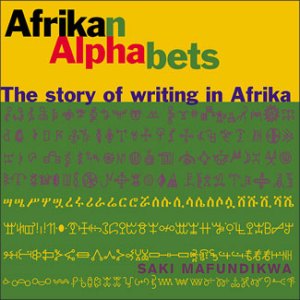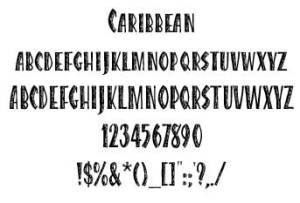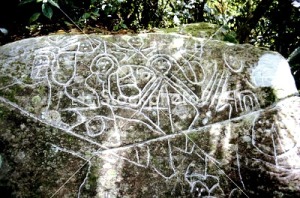I seriously don’t know where this aspect of my research is taking me but I found it very interesting.
In researching non-verbal communication and different types of visual languages I came across Saki Mafundikwa, the author of Afrikan Alphabets: The story of writing in Afrika. It is a comprehensive review of African writings systems.
http://www.aiga.org/design-journeys-saki-mafundikwa/
Here are some page samples of the book:
http://markbattypublisher.com/books/afrikan-alphabets/
Just recently Mafundikwa gave a TED talk titled Saki Mafundikwa: Ingenuity and elegance in ancient African alphabets. In it he speaks of “the creation of a new visual language based on the African creative heritage.”
This interests me as I started wondering about my own heritage as a Trinidadian and a Caribbean woman. What about the creation of a new visual language based on our diverse cultural heritage?
The Caribbean diaspora is a “melting pot” of different cultures. The blood of European, African, East Indian and Indigenous people are engrained in my DNA. Trinidad, the country of my birth has a long history of different people coming to it’s shores and thus enriching the land with their culture.
Many in the world still see the Caribbean as an underdeveloped region with a “laid back” attitude. This is evident in how the Caribbean has been portrayed in film and posters and yes even typographically over the years.
When I did a search for “Caribbean typography” this is what I found.
http://www.jillbell.com/fonts.html
African Connections
A native of Zimbabwe, Mafundikwa founded his country’s first media college with the intension of creating a “Bauhaus sort of school where new ideas were interrogated and are investigated.” Mafundikwa says his school encourages students to “look inward for creative influence”.
In his talk, he went on to list in detail the different graphic languages in Africa and of particular interest to me was the Abakwa graphic writing of the Congo and Angola.
“The Secret societies of the Yuroba, the congo and Palo religions in Nigeria, Congo and Angola respectively, developed this intricate writing system which is alive and well today in the new world in Cuba, Brazil, Trinidad and Haiti,” he said.
This peeked my interest further so I did a search for ancient writing in Trinidad and I came across an article on a Trinidad and Tobago news blog titled “Freemasonry: Ancient Afrikan / Kemetic / Egyptian communal way of life and being by Dr. Kwame Nantambu, March 9, 2007.
Freemasonry is alive and well in Trinidad. In fact I work just opposite an active lodge with the Freemason symbol on the building.
Could this be their secret language?
In further looking at African graphic writing I came across the works of artist Victor Ekpuk.
“Much of my recent work explores drawing as an independent genre that is not a support
for my painting. Ideas are expressed as directly as possible in simple black or white lines on negative spaces. Color in this case is used when needed to support the drawing.
I am fascinated by graphic and writing systems from ancient African cultures and I am also
engaged in creating contemporary aesthetics out of that idea.
To this end, my current drawing project attempts to deconstruct these graphic symbols and signs. Symbols are recomposed and executed on large surfaces, using pastel and graphite on paper.
The goal is to explore these signs, not necessarily for their intended meanings, but for their
visual aesthetics as abstract forms.
-Victor Ekpuk
Title:Children of the Full Moon
http://www.saatchionline.com/ekpuk
Ekpuk’s drawings somewhat resembles the drawings on the indigenous Caurita Stone in the Maracas Valley in Trinidad.
“It is agreed among Amerindian communities in Trinidad that etchings on the stone bear spiritual significance. The site of the Caurita Stone is now regarded as an important part of the ongoing quest for knowledge and understanding of Amerindian ancestral occupation and life on this island.”







